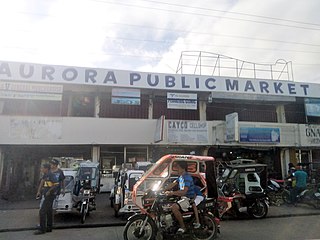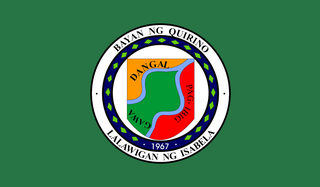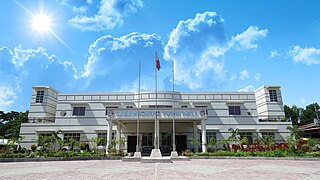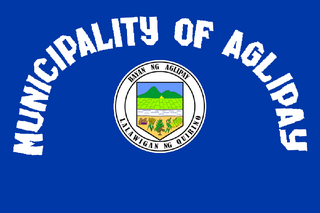
Sanchez Mira, officially the Municipality of Sanchez Mira, is a 3rd class municipality in the province of Cagayan, Philippines. According to the 2020 census, it has a population of 26,164 people.

Alcala, officially the Municipality of Alcala, is a 3rd class municipality in the province of Cagayan, Philippines. According to the 2020 census, it has a population of 41,295 people.

Iguig, officially the Municipality of Iguig, is a 4th class municipality in the province of Cagayan, Philippines. According to the 2020 census, it has a population of 30,060 people.

Lasam, officially the Municipality of Lasam, is a third class municipality in the province of Cagayan, Philippines. According to the 2020 census, it has a population of 41,225 people.

Angadanan, officially the Municipality of Angadanan, is a 3rd class municipality in the province of Isabela, Philippines. At the 2020 census, it had a population of 44,977.

Aurora, officially the Municipality of Aurora, is a 3rd class municipality in the province of Isabela, Philippines. According to the 2020 census, it has a population of 36,621 people.

Cordon, officially the Municipality of Cordon, is a 2nd class municipality in the province of Isabela, Philippines. According to the 2020 census, it has a population of 46,477 people.

Dinapigue, officially the Municipality of Dinapigue, is a 1st class municipality in the province of Isabela, Philippines. According to the 2020 census, it has a population of 5,821 people.

Luna, officially the Municipality of Luna, is a 5th class municipality in the province of Isabela, Philippines. According to the 2020 census, it has a population of 20,697 people.

Naguilian, officially the Municipality of Naguilian, is a 4th class municipality in the province of Isabela, Philippines. According to the 2020 census, it has a population of 33,788 people.

Quirino, officially the Municipality of Quirino, is a 4th class municipality in the province of Isabela, Philippines. According to the 2020 census, it has a population of 25,023 people.

San Agustin, officially the Municipality of San Agustin, is a 3rd class municipality in the province of Isabela, Philippines. According to the 2020 census, it has a population of 22,096 people.

San Isidro, officially the Municipality of San Isidro, is a 5th class municipality in the province of Isabela, Philippines. According to the 2020 census, it has a population of 27,044 people.

San Manuel, officially the Municipality of San Manuel, is a 4th class municipality in the province of Isabela, Philippines. According to the 2020 census, it has a population of 34,085 people.

Santa Maria, officially the Municipality of Santa Maria, is a 4th class municipality in the province of Isabela, Philippines. According to the 2020 census, it has a population of 25,758 people.

Cabarroguis, officially the Municipality of Cabarroguis, is a 3rd class municipality and capital of the province of Quirino, Philippines. According to the 2020 census, it has a population of 33,533 people.

Diffun, officially the Municipality of Diffun, is a 2nd class municipality in the province of Quirino, Philippines. According to the 2020 census, it has a population of 56,102 people.

Maddela, officially the Municipality of Maddela, is a 1st class municipality in the province of Quirino, Philippines. According to the 2020 census, it has a population of 40,943 people.

Saguday, officially the Municipality of Saguday, is a 5th class municipality in the province of Quirino, Philippines. According to the 2020 census, it has a population of 17,137 people.

Aglipay, officially the Municipality of Aglipay, is a 3rd class municipality in the province of Quirino, Philippines. According to the 2020 census, it has a population of 30,714 people.
























